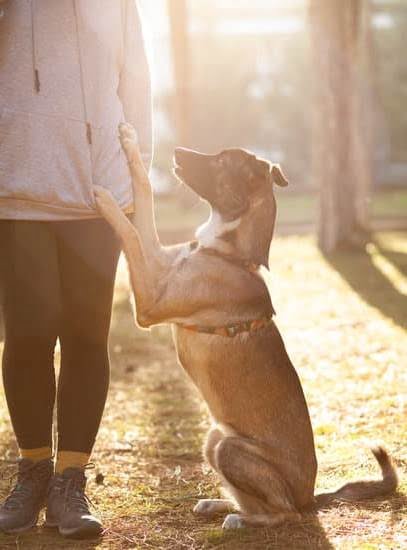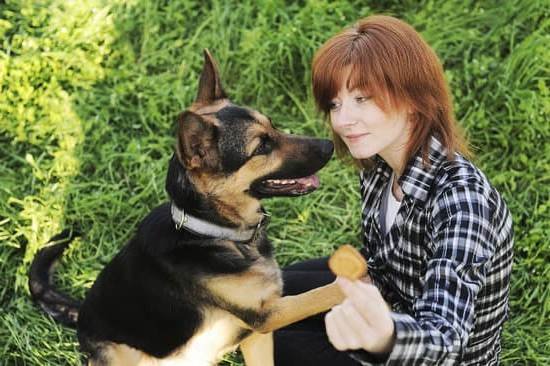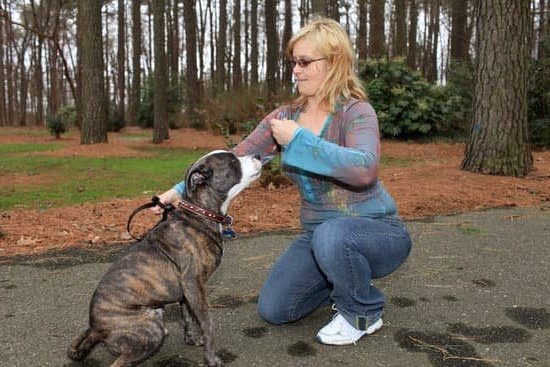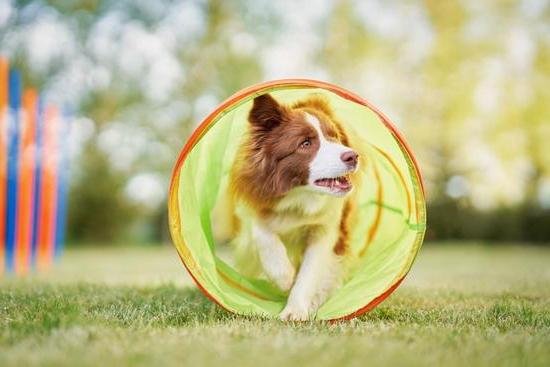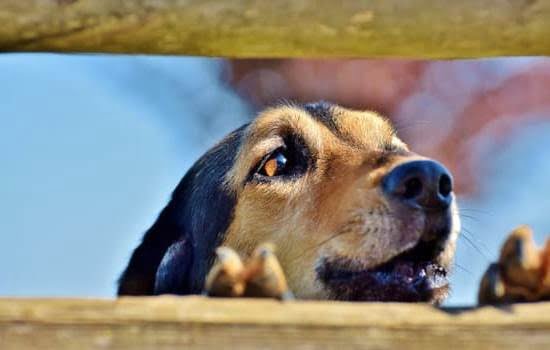Introduction
House training your puppy or dog is an important part of owning a pet. Not only does it make living with your pet easier, but it also helps promote good behavior and create a safe environment for both you and your pet. House training requires time, patience and consistency, but the payoff will be worth it in the long run. Here are some tips to help succeed in house training puppies and dogs.
Consistency – A Key to Success
One of the most important elements of house training success is consistency. Make sure that everyone in the household, including visitors, is following the same rules when it comes to feeding, walking and discipline. This may mean that everyone needs to agree on specific commands to use such as “no” or “stop” as well as acceptable areas for eliminating. Additionally, schedule times for going outside and potty breaks so that your puppy gets used to having predictable routines — including where they are allowed (and not allowed) to go bathroom! This sets them up for success and makes getting their housetraining down pat much quicker!
Positive Reinforcement Rewards
Positive reinforcement rewards are another powerful tool when house training puppies and dogs. Housetraining works best when accompained by lots of praise, treats and rewards when they do something correctly. Each time they eliminate outside where you want them to go, give them lots of positive affirmation and a small treat as an incentive for doing the proper thing! Doing this over time will get them into good habits faster than getting frustrated with them if they slip up here or there
Setting up an Effective Training Environment
Creating an effective training environment for your puppy or dog is vital to their successful house training. You need to make sure that the area you will be using for the house training is free of items and furniture that could distract them, as well as anything they could chew on or urinate on. First set up designated areas in the house where your pet can sleep, rest, play, and eat. Be sure to mark these areas with a sticky tape line if they are in separate rooms. Additionally, choose a specific location in your house that will act as a potty area (sometimes referred to as the ‘toilet area’). This should be outside preferably, however depending on space and weather conditions it may also be possible indoors. Mark this area off with tape as well; this way your puppy or dog will associate this spot with their bathroom duties. Then ensure that you stock the toilet area with toys that offer plenty of entertainment options and reward them when they do use it correctly – such reinforcements will help break any bad habits and encourage good ones instead! Lastly, create an easy-to-follow routine for feeding times and exercise intervals so that your pup or dog knows what to expect throughout the day.
Establishing a Potty Schedule
Establishing a potty schedule for your puppy or dog is one of the most important steps to successful house training. To get started you need to understand the amount of time it will take your pet to digest their food and need to go outside. Typically, puppies and dogs need to go outside every two hours during the day, as well as first thing in the morning and last thing at night, as well as after activities like playtime or naps. When house training your puppy or dog, take them out on regular intervals and reward them with treats when they go in the appropriate areas. Allow them plenty of time outside and praise them each time they’re successfully housetrained. When you can’t be around for a few hours, crating helps keep accidents from happening inside. You should also create a special spot indoors so that your pup feels comfortable going potty when needed. Make sure this spot is always clean and washable, since any lingering smells may encourage more peeing in that same location again. Lastly, be consistent with both rewards and punishments while they are learning so they know what behaviors are acceptable and which aren’t.
Picking the Right Potty Spot
One of the most important steps in house training puppies and dogs is to pick the appropriate potty spot for your pup. It should be an area that is easily accessible and sheltered from bad weather, such as rain or snow. Keep in mind that smaller surfaces like patios and balconies can be used for pottying, but do not provide enough room for larger dogs to move around freely. It’s also a good idea to consider installing artificial grass, which has many benefits and can make cleanup much easier than dealing with dirt or mud. Additionally, when picking a spot to build the potty area, try to keep it close to the inside door where your pet enters and exits the home–this increases chances that your pup will learn more quickly where they are supposed to go potty. Lastly, always take time to reward positive behaviors whenever your dog has gone in their designated spot as this reinforces their progress in house training!
Positive Reinforcement
Positive reinforcement is an important part of successful house training puppy and dogs. Rewarding a dog’s good behaviour with verbal praise, positive physical contact, or treats will reinforce the behavior and help to ensure that they continue to rely on it when being house-trained. Specific treats can be used to reward desired behaviors, such as going potty in the correct location outside when using ‘paper training’. When first teaching your pet bladder control and eliminating outside, determine what motivates them, either food or attention, then use it effectively when praising your pet for performing the desired behavior. Whenever the dog eliminates in their designated location you can offer verbal praise – ideally just after they have finished so they link the two together. Make sure to be consistent; every time your puppy does what you are trying to encourage, give them a treat, attention or both and make it clear that you are pleased with them. However do not wait too long before rewarding as this may lead them to associate the reward with something else they were doing around the same time rather than going potty in the right place.
Establishing Routines and Rules
When house training puppies and dogs, it’s important to establish routines and rules. Dogs respond well to scheduled meals and potty breaks, as it helps them learn a sense of predictability. Before the dogs even arrive in their new homes, create a regular eating and sleeping schedule so they can adjust smoothly. Additionally, setting clear rules for house behavior keeps your home safe from chewing, scratching, barking, or digging. Be consistent with enforcing these rules; punishment should be done immediately if needed but also focus on positive reinforcement when the puppy displays desired behavior. Putting in the effort to establish ground rules will help make your puppy’s transition easier and help minimize mistakes.
Recognizing Accidents and Handling Them Properly
It’s inevitable that when you are house training your puppy or dog, they will have accidents. In order to successfully train them, it’s important to recognize when they are about to make a mistake. If you catch them right before they start going to the bathroom inside, then you can use words like “no” or “outside” to help guide them in the right direction and take them outside. Once accidents happen, do not punish your pet by scolding or hitting them; this will only further confuse them and delay the process of learning where they should be relieving themselves. Instead, simply clean the area with an enzymatic cleaning solution designed for odor elimination so that there is no lingering scent that may encourage bad habits in the future. After all messes have been cleaned up, be sure to give plenty of praise and positive reinforcement whenever your pup does their business outside to reward the desired behavior.
Solving Common Training Issues
House training problems are one of the most common issues pet owners face with their puppies and dogs. This is especially true in young puppies who haven’t yet learned how to control their bladder and bowels. Fortunately, house training can be made easier with patience, consistency, and the proper techniques. Here are a few tips for successful house training:
Create a Schedule: Consistency plays a key role in house training so it’s important to establish a set daily routine from the start. Feed your puppy or dog at approximately the same time each day as this will help you assess when they will need bathroom breaks. During potty time, use the same phrase or command such as “go pee-pee!” This will help your pup learn the command faster and recognize what behavior you are expecting from them.
Reward Good Behavior: Whenever your pup does something good like going potty outside, reward your pup with verbal praise, pets, or even a treat. Positive reinforcement is critical for successful house training since rewarding good behavior reinforces that behavior in your pup’s mind.
Monitor Closely: Watch closely for signs that indicate they have to go potty such as sniffing around before eliminating or circling an area on your carpeting indoors. If monitoring isn’t possible due to work, hire an experienced pet sitter to come by on those days and provide ample opportunities for outdoor bathroom breaks during what would be their regular bathroom schedule.
Discourage Bad Behavior: When mistakes do happen and there is an accident indoors, it is important not to scold your pup harshly or rub their nose in it but rather simply redirect them outdoors and clean up the affected area thoroughly afterward with enzymatic cleaners specifically designed for pet messes that eliminate any lingering odors that might encourage future accidents in that spot again.
Maintenance and Prevention of Accidents
If you want to ensure successful house training of your puppy or dog, there are two important things to keep in mind: maintenance and prevention. Maintenance is all about continuing to enforce the house rules, reinforcing positive behaviors, and making sure that accidents do not occur. This can be done by vigilantly following set schedules for both feedings and bathroom breaks, correcting any wrong behavior immediately, and rewarding good conduct with love and treats. Prevention is also key. Take the time to adequately puppy-proof your home by removing anything that could cause harm or temptation. Block access to places like laundry rooms, storerooms, and garages where messes can easily remain hidden. Also make sure to use barriers when needed, such as baby gates, to keep your pet away from food or other objects they may find enticing but should not have access to. Finally, providing plenty of appropriate toys will help reduce counter surfing behavior while keeping them entertained. By taking these steps you can greatly increase the chance of success when it comes to house training your puppy or dog.
Conclusion
At this point, you have done the hard work of teaching your pet to be house trained. Congratulations! You and your pet will enjoy the benefits of having a clean, healthy home. Your pet will be more comfortable, and everyone in your household can take pleasure in knowing exactly where certain things go and that the dog is aware of their boundaries. Going forward, you may occasionally need to remind your pup of the rules but for now, their behavior should improve dramatically. Remember to keep up with positive reinforcement, rewards for good behavior, and consistency when disciplining your pup as well; these strategies will help ensure that your house training plan is successful in the long-term.

Welcome to the blog! I am a professional dog trainer and have been working with dogs for many years. In this blog, I will be discussing various topics related to dog training, including tips, tricks, and advice. I hope you find this information helpful and informative. Thanks for reading!

